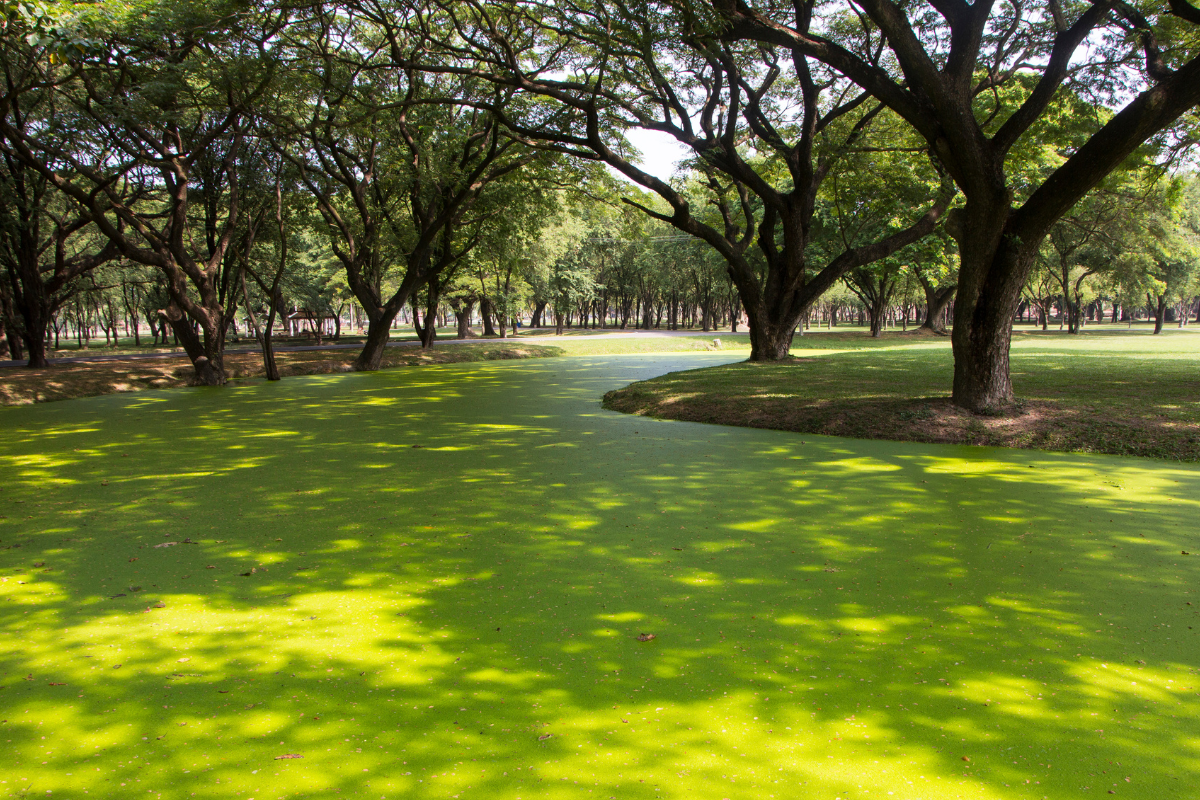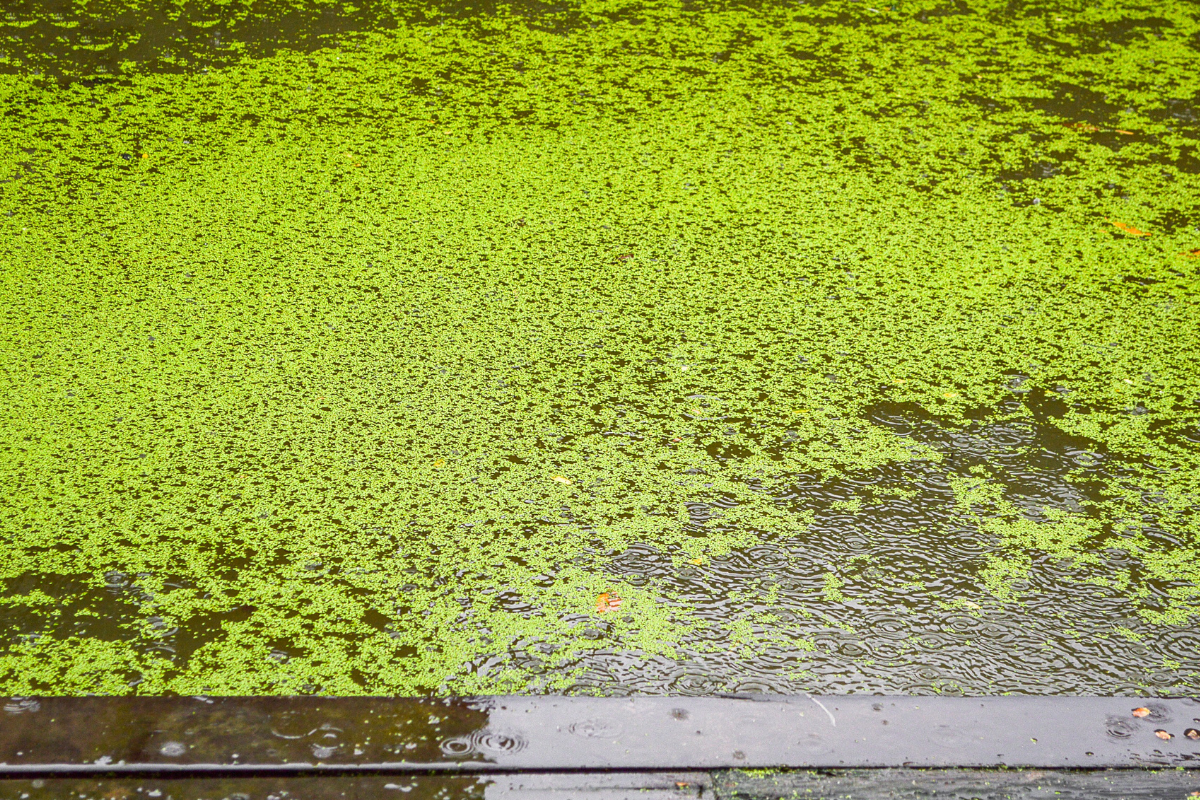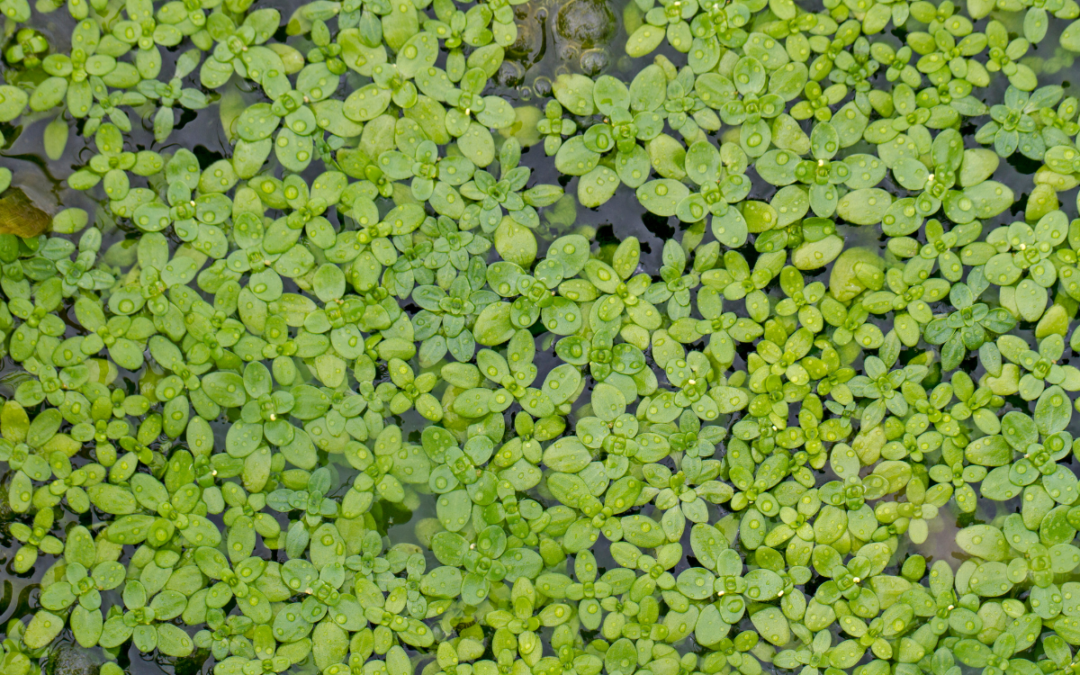Duckweed is a surface floating plant that cause a lot of problems for pond owners. It reproduces extremely fast and can quickly cover the surface of a pond, causing many problems for fish and other aquatic animals. In this blog we’ll explain the issues it causes and what we do to manage it in our customers’ ponds.
First, let’s discuss how duckweed gets in a pond and where we see it most. It will easily adhere to boats and that’s one of the main ways it gets transferred from one pond to another. If you’re fishing in a pond with duckweed, consider washing your boat before launching it another body of water. It can also be transferred via birds as they migrate and move from one body of water to the next.
We see duckweed issues mainly in smaller ponds with quiet water. You don’t see it as much in larger ponds in open spaces where the wind moves the water a good bit. It’s also typically found in ponds that receive some type of nutrient runoff. It’s prevalent in agricultural ponds and golf course ponds that receive fertilizer runoff. You’ll also frequently see it in ponds that are near hardwood forests, because the leaf litter provides nutrients that fuel duckweed growth and reproduction.
How Does It Reproduce So Fast?
Duckweed reproduces through both sexual and asexual reproduction, contributing to its rapid proliferation under favorable conditions. The primary methods of reproduction in duckweed are:
-
Asexual Reproduction (Vegetative Reproduction):
- Budding: Duckweed plants produce daughter plants, or “buds,” at the base of their leaves. These buds develop into new individuals, which eventually separate from the parent plant to become independent.
- Fragmentation: Duckweed can easily break apart into smaller fragments, each capable of growing into a new plant. This process is facilitated by wind, water movement, or physical disturbances.
-
Sexual Reproduction:
- Flowering and Seed Formation: Duckweed can also reproduce sexually. Under certain conditions, duckweed plants produce tiny flowers. The flowers can be unisexual or bisexual, depending on the species. Once fertilization occurs, seeds are produced. However, not all species of duckweed produce seeds, and many are primarily vegetatively reproducing.
The combination of asexual and sexual reproduction contributes to the rapid colonization of water surfaces by duckweed. A single duckweed plant can give rise to numerous offspring through asexual means, and the potential for genetic diversity is introduced through sexual reproduction.
These reproductive strategies, combined with the ability of duckweed to tolerate a wide range of environmental conditions, make it highly adaptable and capable of colonizing various aquatic habitats. The ability to reproduce quickly contributes to its role as a potentially invasive species in water ecosystems.

Problems Caused by Duckweed
Rapid Growth
Duckweed is known for its fast growth rate. Under favorable conditions, it can reproduce quickly and cover the surface of the water in a pond. This fast growth can result in dense mats of vegetation, which can reduce sunlight penetration into the water and negatively affect other aquatic plants.
Oxygen Depletion
Dense mats of duckweed can block sunlight from reaching submerged plants in a pond. As a result, the submerged plants will struggle to photosynthesize and produce oxygen. This can lead to a decrease in dissolved oxygen levels in the water, which is essential for fish and other organisms in the pond. Consistently low oxygen levels over time can eventually lead to fish kills.
Aesthetic Concerns
While it does provide a food source for some animals, the dense coverage can be aesthetically displeasing for pond owners. Most pond owners find it undesirable when it covers the entire surface of a pond, affecting the visual appeal of the pond and reducing recreational use.

How Do You Control It?
Non-Chemical Methods
Because duckweed population explosion is usually caused by nutrient runoff, one way to control is to eliminate the runoff source. This is often easier said than done. But some land owners are able to divert water flow so that it’s not going straight from a high nutrient area into the pond.
Physical removal is possible in some situations, but is often times a losing battle. Some pond owners will use a rake or other tools to skim the surface and physically remove it from the pond. But it’s impossible to get it all and it will usually come back with a vengeance.
A proposed biological method of control is stocking tilapia. These fish are known to eat it in large quantities, but there are limitations to this technique as well. This would only work in a southern climate as tilapia usually perish once temperatures dip below 55F.
Chemical Methods
Compared to some other aquatic weeds, duckweed is relatively easy to control with approved aquatic herbicides. These herbicides will turn the green into brown and it will float to the bottom of the pond. Approved aquatic herbicides are usually gone from the water in 7-10 days, so repeated applications are often needed to completely remove the duckweed.
Let Up Help Improve Your Pond!
If you’re in the south GA or north FL areas and need help with unwanted aquatic vegetation on your pond or lake, complete this form and we’ll contact you to schedule a time to meet. We look forward to turning your pond into a productive fishery for years to come!

